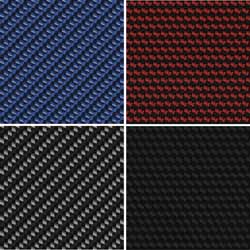Modelling composite behaviours
CFRP composites with their high strength-to-weight ratio reduce fuel consumption and emissions without compromising performance. A number of concepts for accelerated ageing and lifetime predictions of the behaviour of CFRPs currently exist. The EU-funded project 'Fatigue testing of CFRP materials' (FATIMA) is adapting existing approaches to materials supplied by the partners of the Clean Sky initiative. These materials are earmarked for the next generation of significantly greener aircraft. Scientists are interested in better methods to evaluate the effects of humidity, multi-ply or stack-up structures, and multi-axial loading. Models of a number of different laminate structures-of-interest will form a toolbox for forming multi-laminates from plies of known behaviour. Test campaigns are using the Dynamic Mechanical Analyser DMA Q800-RH (Relative Humidity), the Q5000SA Dynamic Vapour Sorption Analyser and the METRAVIB DMA. To date, work on adapting models to account for the influence of moisture content on mechanical behaviour and lifetime has progressed well. Using the abovementioned machines for experimental data collection, the Miyano Accelerated Testing Methodology was extended to include the effects of humidity. Experimental and theoretical studies of laminated structures consisting of individual ply types were carried out. This facilitated the development of detailed finite element (FE) models describing time–temperature behaviour under conditions of dynamic loading. Data have been used to form a five-layer model consisting of individual plies in a multi-layer structure. Finally, a specially developed sample holder has been used to combine tensile and bending loads and assess the effects of multi-axial loading. Multi-ply samples were subjected to three-point loading tests in which digital image correlation was used to study failure modes. FE simulations of uni-axial tensile and bending loads have been performed. During the next phase, multi-axial loading will be simulated to identify the failure mechanisms as observed in the experiments.The FATIMA toolbox for modelling of multi-layer laminates is representative of CFRPs to be used in the Clean Sky programme. This will facilitate the development of materials to meet objectives related to cleaner and greener aircraft. Ensuring strength and durability against ageing effects will keep maintenance and operation costs down while enhancing safety.







